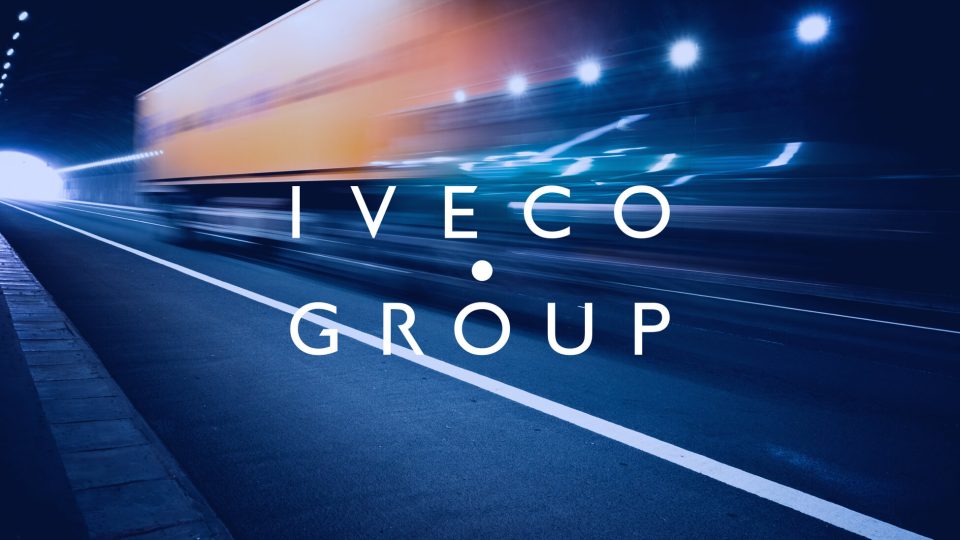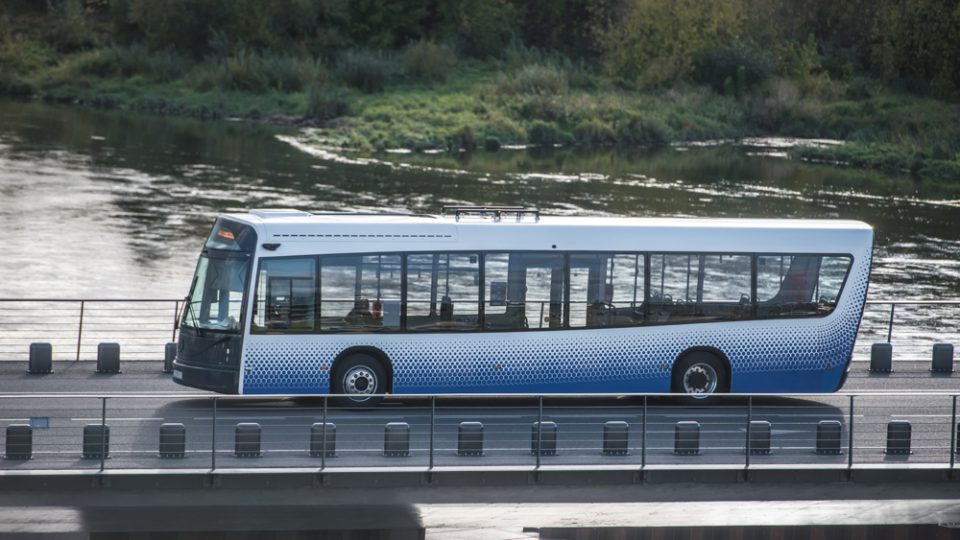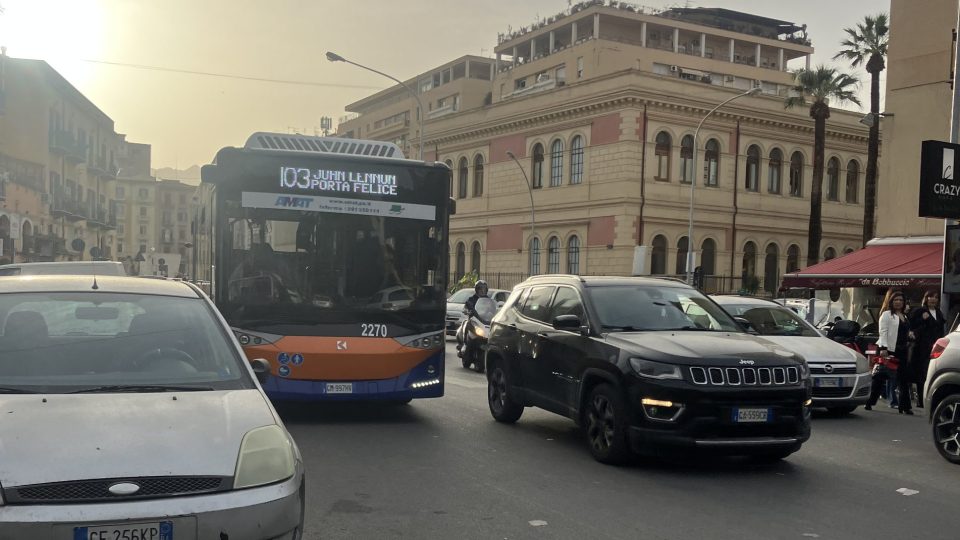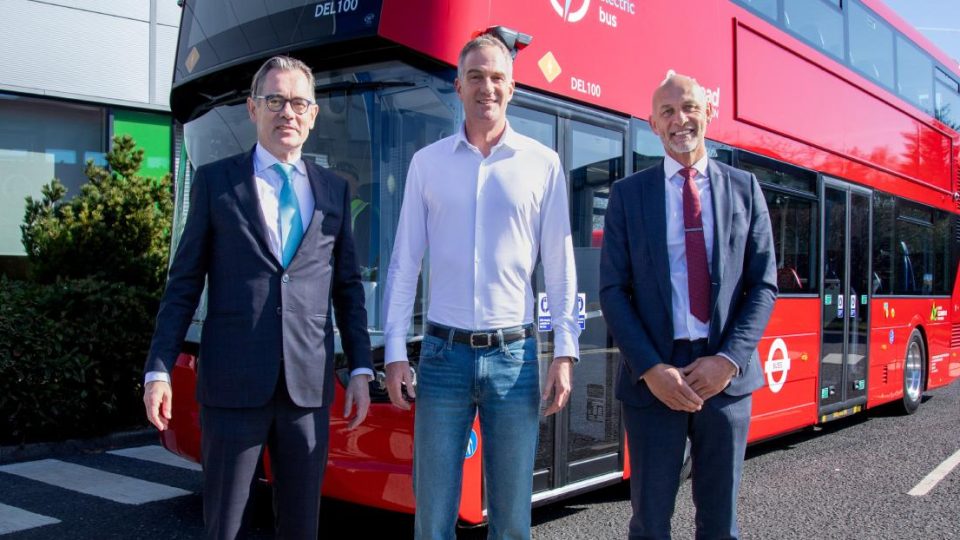Ebusco financial results 2022 published. The company is looking for an assembly partner
Ebusco has published its financial results 2022. Data shows a EBITDA loss of €34.8 million “due to the ramp up and supply chain related production inefficiencies” and a net loss for the year of €32.2 million. On the other hand, revenue increased by 360% to €111.6 million “despite delayed shipments and deliveries”. The balance sheet […]
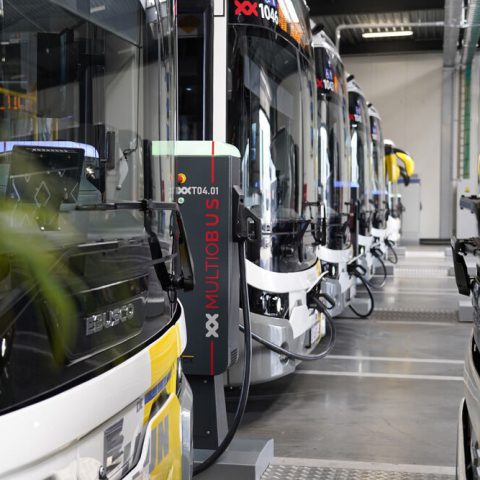
Ebusco has published its financial results 2022. Data shows a EBITDA loss of €34.8 million “due to the ramp up and supply chain related production inefficiencies” and a net loss for the year of €32.2 million. On the other hand, revenue increased by 360% to €111.6 million “despite delayed shipments and deliveries”.
The balance sheet total decreased from €332.7 million as at 31 December 2021 to €320.6 million as at 31 December 2022.
To create flexibility, Ebusco has started discussions with a European third-party bus assembly partner. By outsourcing part of the assembly activities, Ebusco aims to enhance capacity and support the ramp up in Deurne.
Ebusco sees “4,744 buses in tenders in our markets which are expected to come to market in the next 12-24 months“.
The Dutch company has the goal of reaching a production volume of “over 3,000 zero emission buses per year within the next five years”. Quite a striking goal, considering that last year a total of 78 Ebusco e-buses were registered in Europe according to Chatrou CME Solutions figures on the European electric bus market 2022. Ebusco also expects to reach an EBITDA margin of 20-25% within the next five years compared to 35% previously.

Ebusco financial results 2022
Ebusco ended 2022 with an order book of 1,474 buses compared to 325 at the year end 2021. In total, Ebusco received orders (fixed contracts, call-off and options) for 1,225 buses in 2022 (2021: 240 buses), of which 336 Ebusco 3.0 buses. The lightweight features of the Ebusco 3.0 and the resulting lower energy consumption continue to be the main differentiator versus our competition.
The Dutch company says, in the press note accompanying the announcement of financial results 2022: “In 2022 Ebusco has made the next steps in executing its ramp-up plan. Early in the fourth quarter of 2022, Ebusco reached the capacity of one casco per day for the first time, quickly followed by three buses per week in that same quarter. It should be noted that parts availability has had an impact on the ramp up; the installation of missing parts post-assembly is creating additional work, inefficiency and delayed start of follow-on projects. Regardless of these setbacks, Ebusco continued its efforts to meet the forecasted ramp-up. Late in the first quarter of 2023 Ebusco successfully moved its pre-delivery inspection activities to a new location in Venray. This enabled the establishment of a dedicated fit for growth casco facility in Deurne and three assembly lines for the Ebusco 3.0 at the same location”.
To catch up on the delayed delivery of certain parts, Ebusco continues, “two of these lines are temporarily being used for installation of missing parts post-assembly. As of the first week of 2023 our bus assembly line and certain parts of our casco team are working in a two-shift operation. Reaching a capacity of one bus per day and further growing towards a capacity of two buses per day is expected in the course of the second quarter of this year. Due to the tense labor market attracting skilled and sufficient personnel is the main requirement for reaching the two buses a day milestone”.
Although we can be proud of many milestones, it’s equally true that we are facing ongoing geopolitical uncertainty and global supply chain constraints, impacting the number of buses assembled, shipped and delivered. In relation to the Ebusco 3.0, parts availability has triggered production inefficiencies as buses had to be moved in and out of the production line. For the Ebusco 2.2, high transport prices had a pressing effect on our profitability as did the resurgence of COVID-19 in China, forcing us to move part of our shipments from 2022 to 2023. Next, attracting skilled personnel is a challenge.
Peter Bijvelds, founder and CEO, Ebusco
Ebusco activities in France (Rouen) speeds up
In February of 2023, the lease contract for the former Renault facility in Rouen was formalized, company says. The refurbishment and start up plans are on schedule with the hand-over to Ebusco expected to take place in the third quarter of 2023.
Installation of the already procured tooling and equipment and start of the ramp-up of casco production will take place in the remainder of the year. The first people have been hired and a detailed training plan for these new employees has been developed. In the course of 2024, the Rouen facility will have a capacity of two casco’s per day, according to Ebusco’s statement.
Focus on gross profit margins
Gross profit as percentage of revenue increased from 5.0% in 2021 to 14.0% in 2022. Adjusted for a one-off item in 2021, the gross profit margin decreased from 21.3% to 14.0% in 2022.
Ebusco had originally expected gross margin to be higher in the second half of 2022 compared to the first half of 2022. However this expectation did not mature due to, in Ebusco’s words:
- Higher start up production cost and use of proto parts to get first Ebusco 3.0 on the road
- Negative mix effect due to the delayed shipment and delivery of Ebusco 2.2
- Additional design cost on the BVG order
- Higher raw material prices due to inflation
“Adjusted for these items, gross margin would be well north of 20%. The expected gross margin in the current order book is well above the adjusted of 2022”.
Ebusco financial results 2022: focus on the workforce
The average number of full-time employees (including contractors) increased by 96% from 227 FTEs in 2021 to 446 FTEs in 2022 (607 FTEs as per year-end 2022). In the second half of 2022, “the increase in indirect labor cost has slowed down as we approached a level of maturity required for further growth. The increase in direct labor is likely to continue as we ramp up the production of the Ebusco 3.0 buses. The combination of ramping up production, an inflow of new employees that go through the learning curve and the impact of parts availability on production have resulted in a significant inefficiency in direct labor”.
EBITDA came in at a negative €34.8 million
In the 2022 financial year EBITDA came in at a negative €34.8 million compared to a negative EBITDA of €34.2 million in 2021. The 2021 EBITDA includes several one-off costs for a total amount of €13.7 million which led to an underlying EBITDA of negative €20.5 million, Ebusco states.
The manufacturer adds: “The result for the year decreased from a loss of €26.8 million in 2021 to a loss of €32.2 million in 2022. Earnings per share changed from a loss of €0.56 per share in 2021 to a loss of €0.54 per share in 2022. The average number of shares outstanding in 2022 amounted to 59,039,380 (2021: 47,502,302). At year end 2022 the outstanding number of shares was 59,039,380”.
Capital expenditure “increased from €5.0 million in 2021 to €9.7 million in 2022 and included investments in equipment related to the set-up of the blueprint facility in Deurne and investments in the transportation of demo and prototype buses, respectively”. In relation to the production ramp up, Ebusco expects capital expenditure of € 10-15 million in 2023.
Ebusco priorities for 2023
Based on the current production and delivery planning, order book and ongoing tender activity, Ebusco management expects another sharp increase in revenue, an improvement in the gross margin and a positive EBITDA.
Ebusco’s 2023 outlook looks like the following: “Revenue to increase sharply again with 550-600 buses contributing to revenue, improvement in gross margin and positive EBITDA for the full year, weighted towards the 2H23, ongoing growth of the order book based on current tender pipeline, capital expenditure of €10-15 million focused on future growth”.
Peter Bijvelds statements on Ebusco 2022 results
Peter Bijvelds, founder and CEO at Ebusco, states: “As indicated in our full-year update on February 14th, 2022 has been a year of recovery and expansion for Ebusco. The year resulted in a sharp increase of revenue of 360% and strong growth of our order book which ended the year at 1,474 buses compared to 325 at year end 2021. This growth was mainly driven by the Deutsche Bahn framework and the commercial success of both the 12m and 18m Ebusco 3.0.
Much of our growth can be explained by our people. We already learned early on that we have to be more efficient, smarter and different to outweigh the competition. Innovation is in the DNA of our people. Evidence of this includes the launch of the Ebusco 3.0 18-meter only a year after the first 3.0 was delivered, already resulting in 184 buses in order. It is a clear example of the non-hierarchical and decisive culture we have been able to foster. While the release of the 18-meter bus in 2022 may be the most telling example, the entrepreneurial culture is deeply rooted in our company. 10 years of experience allow us to make daily decisions based on real-road data, ensuring our solutions are well aligned with reality.
Although we can be proud of many milestones, it’s equally true that we are facing ongoing geopolitical uncertainty and global supply chain constraints, impacting the number of buses assembled, shipped and delivered. In relation to the Ebusco 3.0, parts availability has triggered production inefficiencies as buses had to be moved in and out of the production line. For the Ebusco 2.2, high transport prices had a pressing effect on our profitability as did the resurgence of COVID-19 in China, forcing us to move part of our shipments from 2022 to 2023. Next, attracting skilled personnel is a challenge.
The market for zero emission buses continues to grow and our objective remains to produce 3,000 buses with the aim to reach this in the next five years. Given the supply chain disruptions and inflation we however feel it is more prudent at this point to lower our profitability goals to an EBITDA margin of 20-25% to be reached in the next five years”
I would like to thank the entire Ebusco family, our clients, partners, shareholders and Supervisory Board for their ongoing support to achieve our vision ‘to drive the transition to sustainable transport.’ Not only in 2022, but throughout a decade of Ebusco. Focus for 2023 is to grow production capacity, further optimise our supply chains, improving gross margin and operational efficiencies while keeping our innovation-based commercial momentum”.


